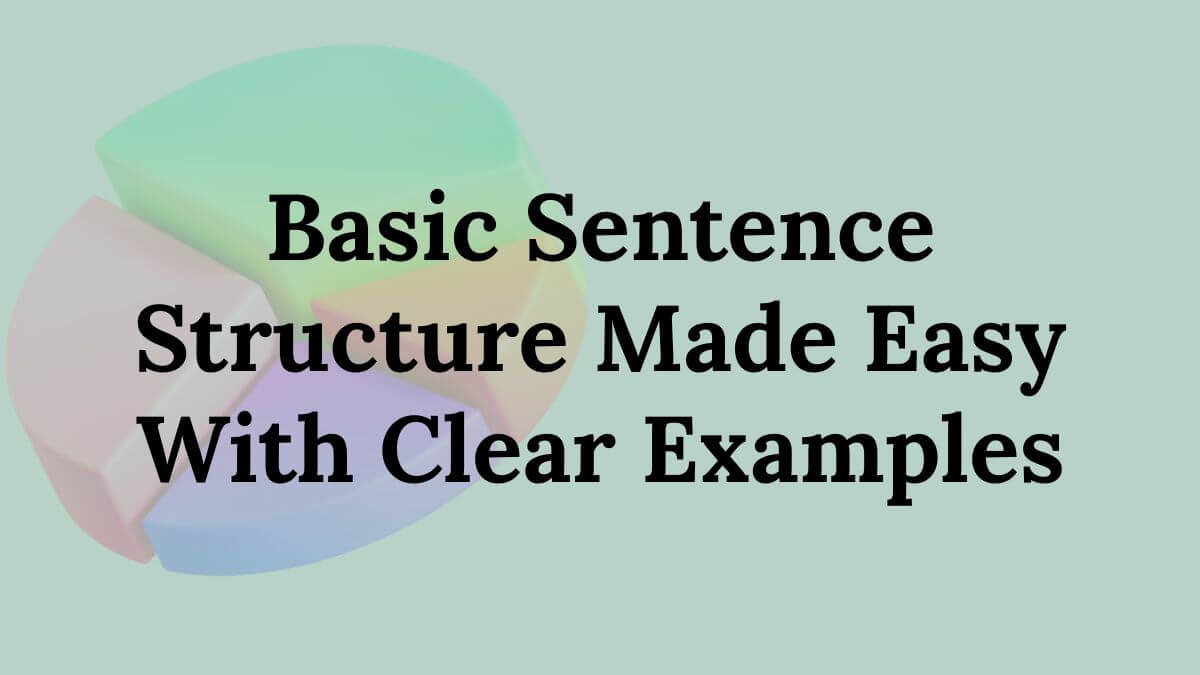Understanding basic sentence structure is the key to mastering English grammar. Whether you’re a beginner or an educator helping others, knowing how to form clear, correct sentences is the foundation of effective communication.
In this guide, you’ll learn everything you need about basic sentence types – with clear examples to help you every step of the way.
What Is Basic Sentence Structure?
Basic sentence structure refers to the essential components that make a complete sentence. In its simplest form, an English sentence must have a subject and a verb to be complete. Sometimes, it includes an object or other elements like adjectives or adverbs.
Here’s a simple breakdown:
- Subject – The subject tells us who or what is doing the action in the sentence.
- Verb – what the subject is doing
- Object – the thing or person that receives the action of the verb.
Let’s look at how these pieces come together using different sentence patterns.
1. Subject + Verb (SV)
This is the most basic sentence form. It includes a subject and a verb to form a complete thought.
Examples:
- Birds fly.
- She runs.
- They swim.
- Time passes.
- He sings.
These short and simple sentences are grammatically complete and easy to build upon.
2. Subject + Verb + Object (SVO)
This sentence pattern adds an object, the thing receiving the action of the verb.
Examples:
- She eats apples.
- I watch movies.
- They build houses.
- We write stories.
- He loves chocolate.
It is one of the common sentence patterns/structures in English.
3. Subject + Verb + Complement (SVC)
A complement gives more information about the subject. It often follows linking verbs like is, are, was, or seem.
Examples:
- She is a doctor.
- He became angry.
- They are students.
- I feel happy.
- The soup tastes good.
Complements make your basic sentence clearer and more expressive.
4. Subject + Verb + Indirect Object + Direct Object (SVIO)
This structure includes two objects: one receiving something (indirect), and the other being given (direct).
Examples:
- She gave me a gift.
- He sent them an email.
- I told her a story.
- They offered us help.
- We brought him food.
Learning this pattern helps you express more complex ideas naturally.
5. Subject + Verb + Object + Extention
In this sentence pattern/structure, the extension gives more information about the specific object.
Examples:
- They painted the wall blue.
- She named her son Max.
- He made the task easy.
- We called him a genius.
- I found the book interesting.
This structure is useful for giving descriptions or results of actions.
Why Basic Sentence Structure Matters
Mastering basic sentence structure helps you:
- Write and speak more clearly
- Avoid common grammar mistakes
- Build more complex sentences later
- Understand English faster as a learner
Even native speakers sometimes struggle with sentence clarity. So, focusing on basic sentence forms is beneficial for everyone!
Read More:
- 160 Basic English Words for Daily English Conversations with Examples
- 500 Academic Vocabulary List, Academic Word List for English Learners
How to Practice Sentence Structure With Clear Examples
Practicing regularly will help you improve. Here are some simple ways:
1. Copy and change
Choose a sentence and modify the subject, verb, or object to create a new one.
Original: She eats apples.
New: He drinks milk.
2. Use visuals
Look at a picture and describe it using the SVO pattern.
Example: The boy kicks the ball.
3. Use real-life situations
Think of your day and form sentences.
Example: I wake up early.
4. Mix sentence types
Try writing one of each type daily.
5. Ask and answer questions
Question: What do you do?
Answer: I study English.
The more you play with different patterns, the more natural they will feel.
Tips to Remember Sentence Structure Easily
- Start with short, clear sentences.
- Learn common verbs and nouns.
- Use a notebook or app to collect your sentences.
- Read simple books or news to see examples in context.
- Practice speaking out loud for fluency.
These small habits can make a big difference over time.
Conclusion:
A strong grasp of basic sentence structure is the key to improving your English quickly and confidently. Whether you’re writing, speaking, or just trying to understand others, these sentence patterns are your foundation. By learning the basic sentence types and practicing sentences with clear examples, you’ll communicate more effectively and boost your grammar skills step by step.
Remember: Simple sentences lead to strong communication. Keep practicing, and you’ll be surprised how far you can go!
